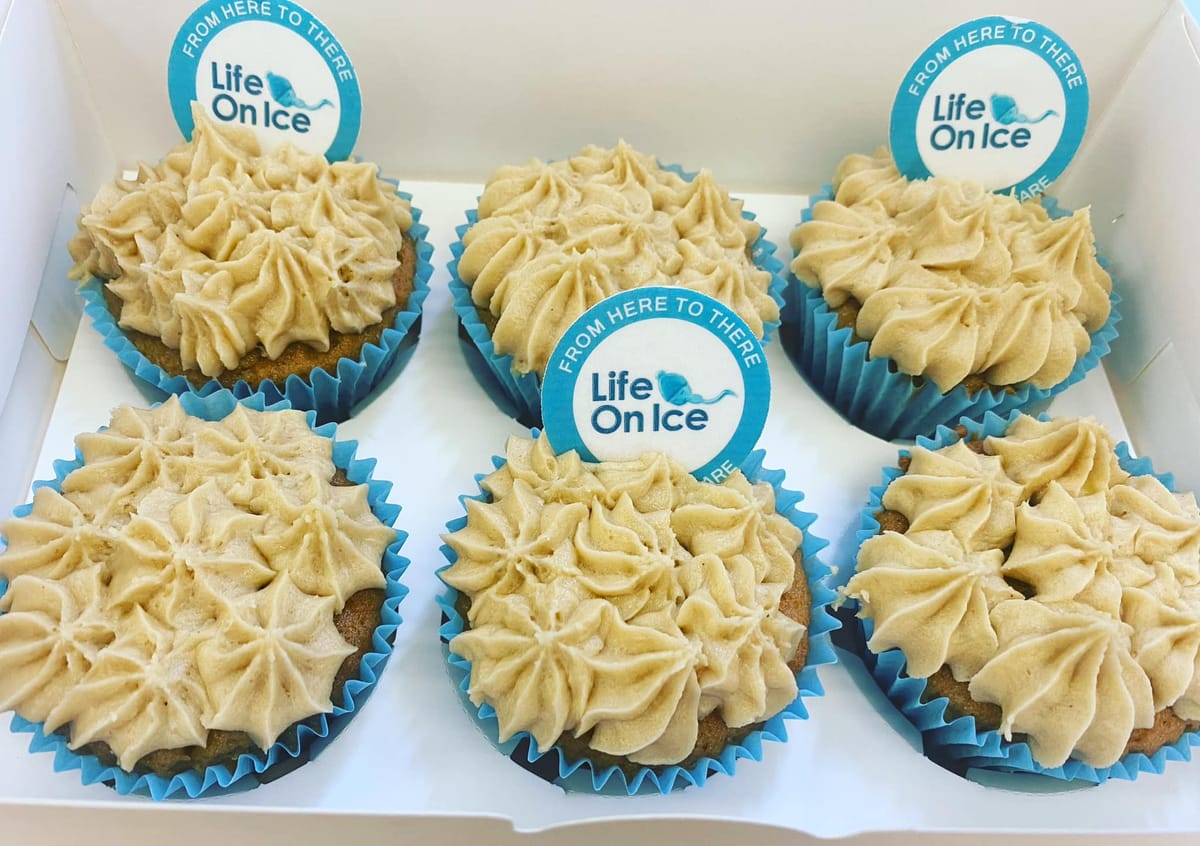Glycerol... A cryoprotectant, a food agent, and more

I heard an article on the news yesterday (see ref 1, below), about Glycerol in slush-type drinks. I used to love a slush drink; I think they were launched in the UK in the mid-70s. and I used to drink them as a teenager. Recently I have discovered a fruity brand available at the cinema, and I have enjoyed a few, especially as they are sugar-free. But I never really thought about it; what makes a slush drink slushy?
The answer, of course, is Glycerol.
Glycerol is a small, simple, naturally occurring alcohol; C3H8O3. It is called both glycerol and glycerine, although it’s correct name in organic chemistry is 1,2,3-propanetriol.
As well as appearing in slush drinks, it has a myriad of other uses. It has no smell, it is used as a solvent, a sweetener, as a humectant in pharmaceutical products and in the food industry, medicine and also as a beauty product. I can remember my mum using rosewater and glycerine to cleanse her face in the mid 1970’s. and I can remember the smell of it on her skin.
When glycerol is in the intestines, it attracts water into the gut, softening stools and relieving constipation. It has also been used by athletes wishing to hyperhydrate, that is, to take extra water on board. Hyperhydration is considered a prudent performance-enhancing strategy prior to exercising rigorously in the heat; however, in 2010, the World Anti-Doping Agency (WADA) added Glycerol to the prohibited list as a potential masking agent, as sit could effectively cause the dilution of doping agents, and reduce the chance of detection (see ref 2).
Of course, my interest in Glycerol was due to it’s use as a cryoprotectant. When I started in the field of Assisted Conception, freezing, thawing and culture media were not commercially available.
Our sperm freeze medium contained citrate, egg-yolk and glycerol - I know that many embryologists of a certain age will be very adept at separating eggs.
It was also used in embryo freezing media, as a penetrating cryoprotectant, and protecting the cells from lethal injury caused by ice crystal formation. They lower the freezing point of water, and when used in other applications are commonly known as ‘antifreeze’, e.g. for use in a car engine.
There is an interesting review in Fertility and Sterility, by Roger Gosden, for anyone who wants to read more (see ref 3.) I think that the current commercially available media no longer use glycerol, and I am not saying that the study just published suggests it’s use in cell cryopreservation is unsafe.
The news article published yesterday references a study published here in the UK about hospital admissions due to drinking slush drinks. The conclusion from that study was that consumption of slush ice drinks containing glycerol may cause a clinical syndrome of glycerol intoxication in young children, characterised by decreased consciousness, hypoglycaemia, lactic acidosis, pseudohypertriglyceridaemia and hypokalaemia. Doctors and parents should be alert to the phenomenon, and public health bodies should ensure clear messaging regarding the fact that younger children, especially those under 8 years of age, should avoid slush ice drinks containing glycerol. (See ref 4, below)
There is also a newer, and potentially dangerous use of glycerol, and this is in vapes or e-cigarettes. Initially these were thought to be a safer alternative to smoking, but the sweet and fruity flavours have pulled in a younger generation who may not have been smokers. The liquids contain propylene glycol, glycerol, nicotine, and chemicals to add flavour. Propylene glycol and/or glycerol are the common constituents of every vaping liquid; they which act as vehicles for nicotine and flavours and also assist the process of aerosol formation. A study (admittedly, in mice) showed that inhaled glycerol has the ability to change the expression of genes controlling the circadian rhythm in the lungs, but also in the liver, kidneys, and skeletal muscles. (See ref 5)
I talked about the food industry – Glycerol / Glycerin is apparently often used in home baking, and as many people know I am a very keen home baker. It’s uses include keeping cakes soft and moist, in various buttercream and icing recipes, and to help with the texture of toffees and fudges. One thing I am sure of; I won’t start using it in my cake kitchen at any point soon!
References:
1 https://www.bbc.co.uk/news/articles/c0l196l2k8ko Children under eight should avoid drinking slushies, doctors warn BBC News 12-Mar-25
2 Polyviou TP, Easton C, Beis L, Malkova D, Takas P, Hambly C, Speakman JR, Koehler K, Pitsiladis YP. Effects of glycerol and creatine hyperhydration on doping-relevant blood parameters. Nutrients. 2012 Sep;4(9):1171-86. doi: 10.3390/nu4091171. Epub 2012 Aug 31.
3 Cryopreservation: a cold look at technology for fertility preservation Fertility and Sterility Roger GosdenVolume 96, Issue 2, August 2011, Pages 264-268
4 Brothwell SL, Fitzsimons PE, Gerrard A, et al Glycerol intoxication syndrome in young children, following the consumption of slush ice drinks Archives of Disease in Childhood Published Online First: 11 March 2025. doi: 10.1136/archdischild-2024-328109
- Lechasseur A, et al. Glycerol contained in vaping liquids affects the liver and aspects of energy homeostasis in a sex-dependent manner. Physiol Rep. 2022 Jan;10(2):e15146. doi: 10.14814/phy2.15146. PMID: 35075822; PMCID: PMC8787618.
